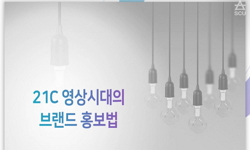This study compares the ritual of an ancient epic 〈Danggeumaegi〉 and the music video 〈Unforgiven〉 of K-pop female idol LE SERAFIM. They have in common the story of a ‘woman who violated a taboo’. The purpose of this study is to reveal the ...
http://chineseinput.net/에서 pinyin(병음)방식으로 중국어를 변환할 수 있습니다.
변환된 중국어를 복사하여 사용하시면 됩니다.
- 中文 을 입력하시려면 zhongwen을 입력하시고 space를누르시면됩니다.
- 北京 을 입력하시려면 beijing을 입력하시고 space를 누르시면 됩니다.

K-pop 여성 아이돌의 유튜브 뮤직비디오에 나타난 제의적 요소-〈당금애기〉와 〈언포기븐〉의 비교 고찰- = The ritual elements appearing in the YouTube music video of a K-pop female idol group-A Comparative Study of 〈Danggeumaegi〉 and 〈Unforgiven〉-
한글로보기https://www.riss.kr/link?id=A109107056
- 저자
- 발행기관
- 학술지명
- 권호사항
-
발행연도
2024
-
작성언어
-
- 주제어
-
KDC
900
-
등재정보
KCI등재
-
자료형태
학술저널
-
수록면
735-767(33쪽)
- 제공처
-
0
상세조회 -
0
다운로드
부가정보
다국어 초록 (Multilingual Abstract)
This study compares the ritual of an ancient epic 〈Danggeumaegi〉 and the music video 〈Unforgiven〉 of K-pop female idol LE SERAFIM. They have in common the story of a ‘woman who violated a taboo’. The purpose of this study is to reveal the ritualistic attributes shown in the music video 〈Unforgiven〉 and to examine the modern meaning of these ritualistic attributes. In order to compare the 〈Danggeumaegi〉 ritual as a performance of the ‘Danggeumaegi myth’ and the music video 〈Unforgiven〉 as a performance of the song ‘Unforgiven’, both are viewed from the perspective of a play by the theory of Martin Esslin’s ‘five sign systems common to all dramatic media’. We transformed the five systems into ‘(1) the outer system outside the play, (2) the performer’s action sign system, (3) the performer’s non-action sign system, (4) the visual signs other than the performer. (5)text’, and analyzed 〈Danggeumaegi〉 and 〈Unforgiven〉 by them. As a result of the comparison, it was revealed that 〈Unforgiven〉 contains ritualistic elements like 〈Danggeumaegi〉 in all five systems. Despite the long gap between 〈Danggeumaegi〉 and 〈Unforgiven〉 and the formal differences in ritual and music video, both of them depict the oppression and resulting pain felt by women as the weak in a patriarchal social structure in their narrative content. It was revealed that it shows a similar ritual structure in that it reflects and attempts to resolve these problems in reality through performances such as dance and song. However, 〈Danggeumaegi〉 suggested to women that they should solve real-life problems through ‘each individual’s patience’ from masculine perspective internalized by women. 〈Unforgiven〉 is significantly different in that it reflects the perspectives of today’s young women and proposes a solution through ‘resistance through solidarity among women.’ In the end, the ritualistic nature of the music video 〈Unforgiven〉 shows that for modern Korean women, who seem to be free in everything, there is still gender discrimination and oppression of women as a “hand-down from the dark era” and the resulting pain of women. This can be interpreted to mean that a ritual function such as ‘Hanpuri’ is needed to resolve the issue.
동일학술지(권/호) 다른 논문
-
독일 상트 오틸리엔수도원 선교박물관 소장 조선 후기 “益山戶籍” 자료의 書誌的 재검토
- 인하대학교 한국학연구소
- 임학성 ( Lhim Hak Seong )
- 2024
- KCI등재
-
추만 정지운의 「천명도」 분석-“生物”과 “命物”, 그리고 “天人一體”-
- 인하대학교 한국학연구소
- 강경현 ( Kang Kyung Hyun )
- 2024
- KCI등재
-
- 인하대학교 한국학연구소
- 허태구 ( Huh Tae-koo )
- 2024
- KCI등재
-
장서각 소장 『통리아문선생안』 분석-통리교섭통상사무아문 운영의 전문성과 인적 구성의 상관성-
- 인하대학교 한국학연구소
- 정소영 ( Jeong So Young )
- 2024
- KCI등재




 KISS
KISS






